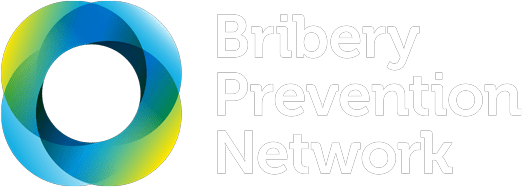Australia’s powerful confiscation laws ensure there can be no profit in bribery. Under the Proceeds of Crime Act, law enforcement agencies are equipped with a range of powers to trace, restrain and confiscate proceeds of crime against Commonwealth laws such as foreign bribery. Any asset can potentially be subject to confiscation if it is the ‘proceeds' or an 'instrument' of a Commonwealth offence.
Liability for bribery and corruption can arise under multiple jurisdictions both inside and outside Australia. In Australia, individuals and corporations can be liable for a range of state and territory offences including offences that apply to conduct in the private sector. For example, section 249B of the NSW Crimes Act contains offences for corrupt commissions or rewards.
Liability for bribery and corruption can arise under multiple jurisdictions both inside and outside Australia. In Australia, individuals and corporations can be liable for a range of state and territory offences including offences that apply to conduct in the private sector. For example, sections 356 and 357 of the ACT Criminal Code contain offences for bribery and corrupting benefits.
Liability for bribery and corruption can arise under multiple jurisdictions both inside and outside Australia. In Australia, individuals and corporations can be liable for a range of state and territory offences including offences that apply to conduct in the private sector. For example, section 176 of the Victorian Crimes Act contains offences for secret commissions.
Liability for bribery and corruption can arise under multiple jurisdictions both inside and outside Australia. In Australia, individuals and corporations can be liable for a range of state and territory offences including offences that apply to conduct in the private sector. For example, sections 442B and 442BA of the Queensland Criminal Code contain offences for secret commissions.
Liability for bribery and corruption can arise under multiple jurisdictions both inside and outside Australia. In Australia, individuals and corporations can be liable for a range of state and territory offences including offences that apply to conduct in the private sector. For example, section 150 of the South Australian Criminal Law Consolidation Act contains an offence for bribery of a fiduciary.
Liability for bribery and corruption can arise under multiple jurisdictions both inside and outside Australia. In Australia, individuals and corporations can be liable for a range of state and territory offences including offences that apply to conduct in the private sector. For example, sections 529 and 530 of the Western Australian Criminal Code contain offences for corrupt rewards.
Liability for bribery and corruption can arise under multiple jurisdictions both inside and outside Australia. In Australia, individuals and corporations can be liable for a range of state and territory offences including offences that apply to conduct in the private sector. For example, section 266 of the Tasmanian Criminal Code contains secret commissions offences for corruption in relation to business.
Liability for bribery and corruption can arise under multiple jurisdictions both inside and outside Australia. In Australia, individuals and corporations can be liable for a range of state and territory offences including offences that apply to conduct in the private sector. For example, section 236 of the Northern Territory Criminal Code contains offences for secret commissions.
Due diligence guidance for responsible business conduct
by Organisation for Economic Co-operation and Development
This resource will support businesses to understand and implement risk-based due diligence as recommended by the OECD Guidelines for Multinational Enterprises – a key international standard on responsible business conduct. The guidance describes the due diligence process using six key steps and suggests practical actions business can take. Helpful tips and detailed explanations are also provided, supported by examples.
This resource unpacks the key role played by whistleblowers in identifying instances of foreign bribery. Approaches to encouraging whistleblowers to report suspected instances of bribery to law enforcement are explored, including ensuring effective legal protection from reprisals. Case studies of the various approaches are provided from around the world to offer practical examples of the recommendations in action.
In 2016, Rolls Royce agreed to pay a fine of over £500 million in a deferred prosecution agreement relating to bribery in China, India, Indonesia, Malaysia, Nigeria, Russia and Thailand. Rolls Royce received significant discounts in penalties for cooperating with the Serious Fraud Office in the investigation and implementing strong anti-bribery policies and procedures after the misconduct was uncovered.
In January 2020, Airbus entered into a deferred prosecution agreement (DPA) which included a fine of €991m in the United Kingdom (UK), as part of a total €3.6bn settlement across France, the UK and the United States for five counts of failure to prevent bribery. The conduct took place across Sri Lanka, Malaysia, Indonesia, Taiwan and Ghana between 2011 and 2015.
A sector specific resource that provides a clear framework for understanding how corruption can get a foothold in mining approvals processes. It provides mining companies with a roadmap to understanding the vulnerabilities to corruption that exist in the mining approval regimes of jurisdictions across the world. It links to a detailed report with examples from 18 resource rich countries.
A tool that can be used by the mining sector to identify and assess the underlying causes of corruption in mining sector approval processes. This third edition includes guidance on how to conduct a gender-sensitive corruption risk assessment. Specifically, the updated MACRA Tool helps identify the gendered impacts of corruption on women as well as the barriers that hinder women’s participation in decision-making and accountability efforts, particularly at a community level.
